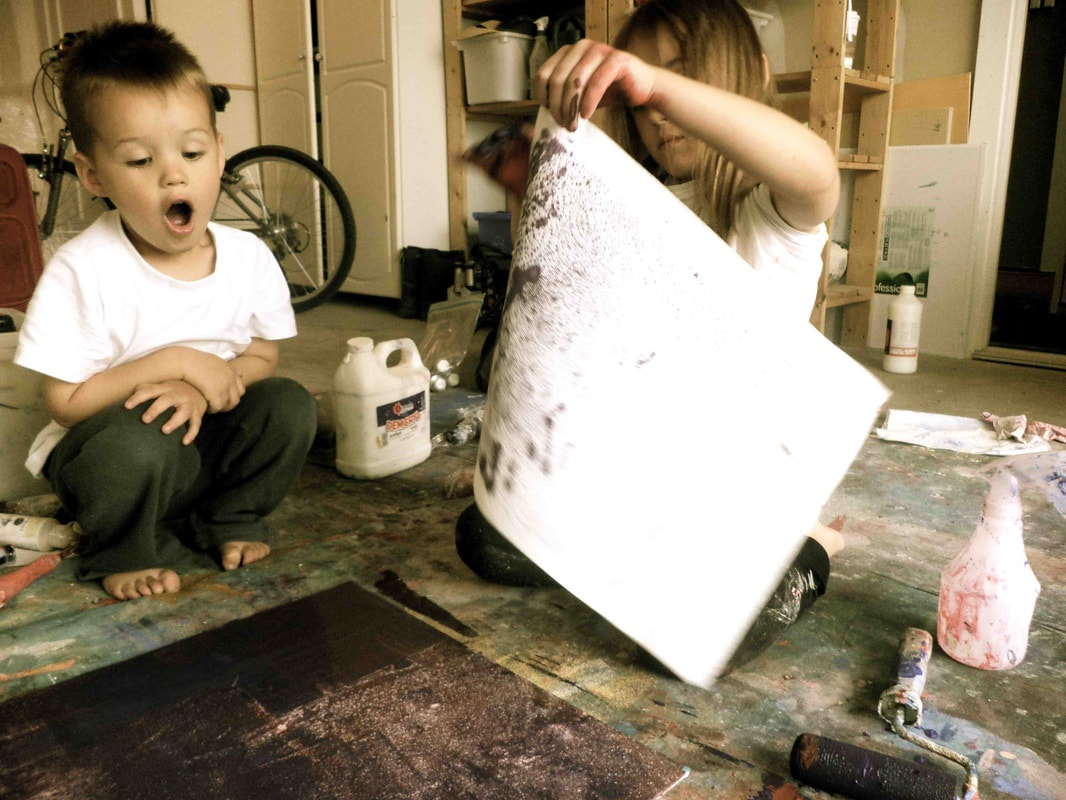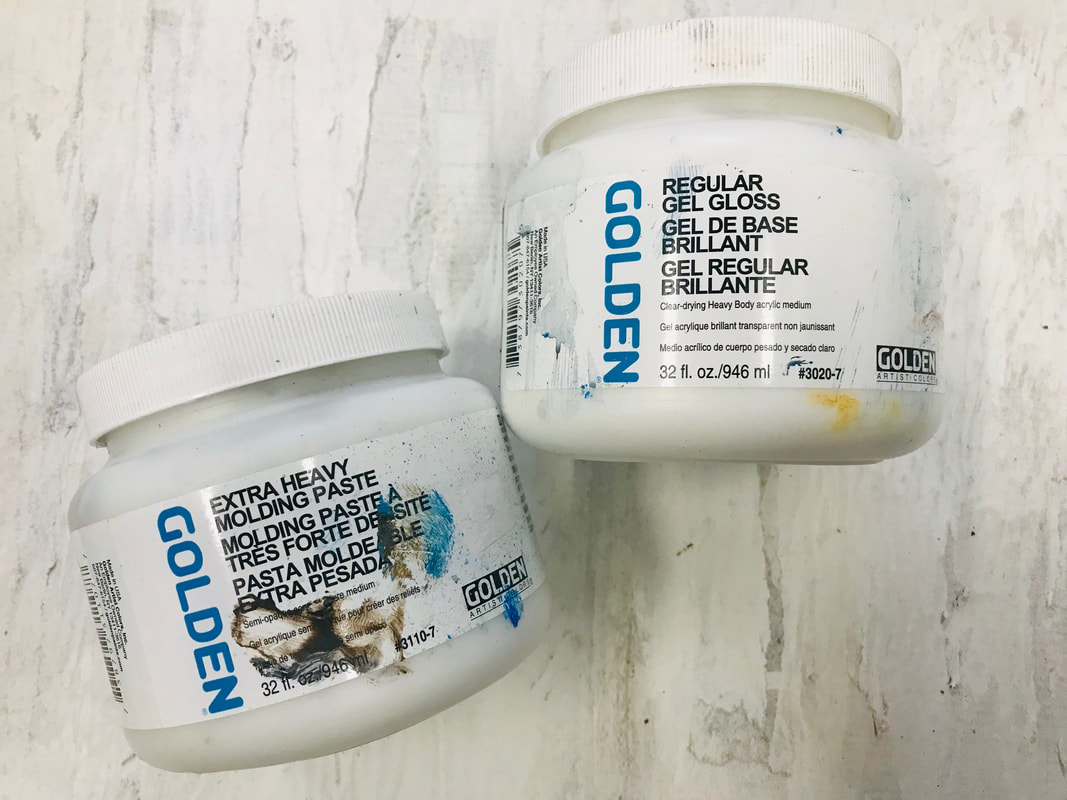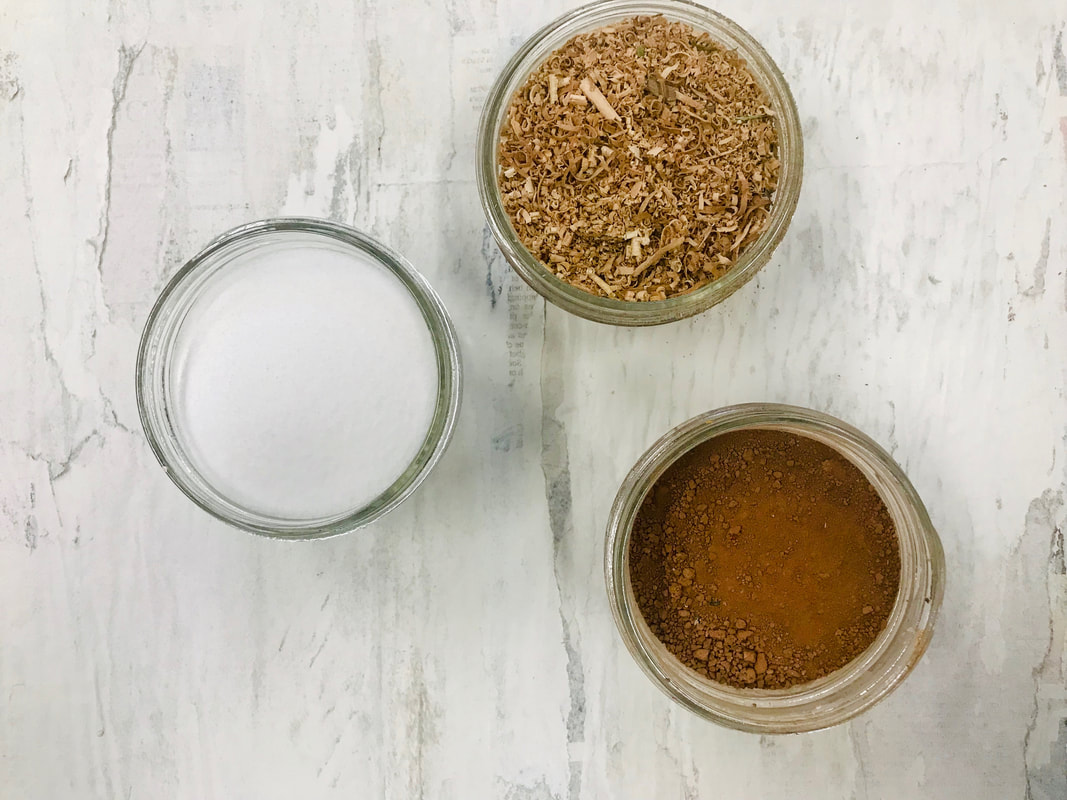|
There's never been a better time to begin your "fearless" abstract painting journey. Use your time in quarantine to clear some space and experiment on the canvas. Have fun! In the following blog post, I share my Top 3 unorthodox acrylic painting texture techniques: 1. Spackling Paste Q. What is it? A. Spackling Paste or Spackling Compound is made of gypsum powder and binders. This product is typically used to patch small holes, cracks and other imperfections like dents and holes on walls. Q. How do you use it? A. Use it as a cost effective alternative for Molding/Modelling paste Use it by itself or mix with acrylic paint, salt, sand and/or sawdust Mix with acrylic paint to cause a colour shift (DAP Spackling + red acrylic paint = pink). If a color shift is not desired, apply to canvas and allow to dry before painting overtop Tends to shrink and crack as it dries. Fall in love with the cracks, or prevent it from cracking by adding paint and/or gel to increase elasticity Once dry, this product can be carved and sanded Use in conjunction with collage for a “distressed” look Dries to a dull, matte finish Q. How long does it take to dry? A. One to several hours depending on the thickness of application and air conditions Q. Where can you find it? A. Hardware store Q. What is Samantha’s favorite brand? DAP Spackling Paste A. Read More Modelling Paste VS Plaster 2. Acrylic Gel Medium Q. What is it? A. White medium used to create texture and act as an adhesive. Essentially, the acrylic gels have the same formulation as acrylic paint but without the color pigment. Gels range in consistency from soft to extra heavy, depending on the finish you are after. Gels range is lustre from matte, semi-gloss and gloss finish. Q. How do you use it? A. Use as a paint extender to increase brilliance and transparency of acrylic paints ie. Mix with student quality paints to give them an “artist quality” look Mix with sand, salt, and/or sawdust Use as a “glue” for incorporating collage elements into your work Mix with acrylic paint to create thin, translucent paint films – a technique called “glazing” Dries to a mostly clear, gloss finish Q. How long does it take to dry? A. One to several hours depending on the thickness of application and air conditions Q. Where can you find it? A. Art Store Q. What is Samantha’s favorite brand? A. Golden & Liquitex Q. Read More A. Gel Medium VS Modeling Paste Translucent Layering 3. Salt
Q. What is it? A. A white, crystalline, hydrophilic (attracts water out of the air) substance, which gives seawater its characteristic taste and is used for seasoning or preserving food Q. How do you use it? A. Mix with acrylic paint, gel and/or Spackling Paste Sprinkle over wet paint and/or medium Feel free to experiment other varieties such as: Fleur de sel, Kosher, or Himalayan Q. How long does it take to dry? A. One to several hours depending on the thickness of application and air conditions. However, if you live in climates of high humidity, your painting may never dry depending on how much salt you used. Q. Where can you find it? A. Grocery store Q. What is Samantha’s favorite brand? A. Morton Table Salt or salt collected from the Great Salt Lake Comments are closed.
|
This blog was created to share my belief that the art-making process is a catalyst for transformation and personal empowerment. I am living proof.
Categories
All
|


